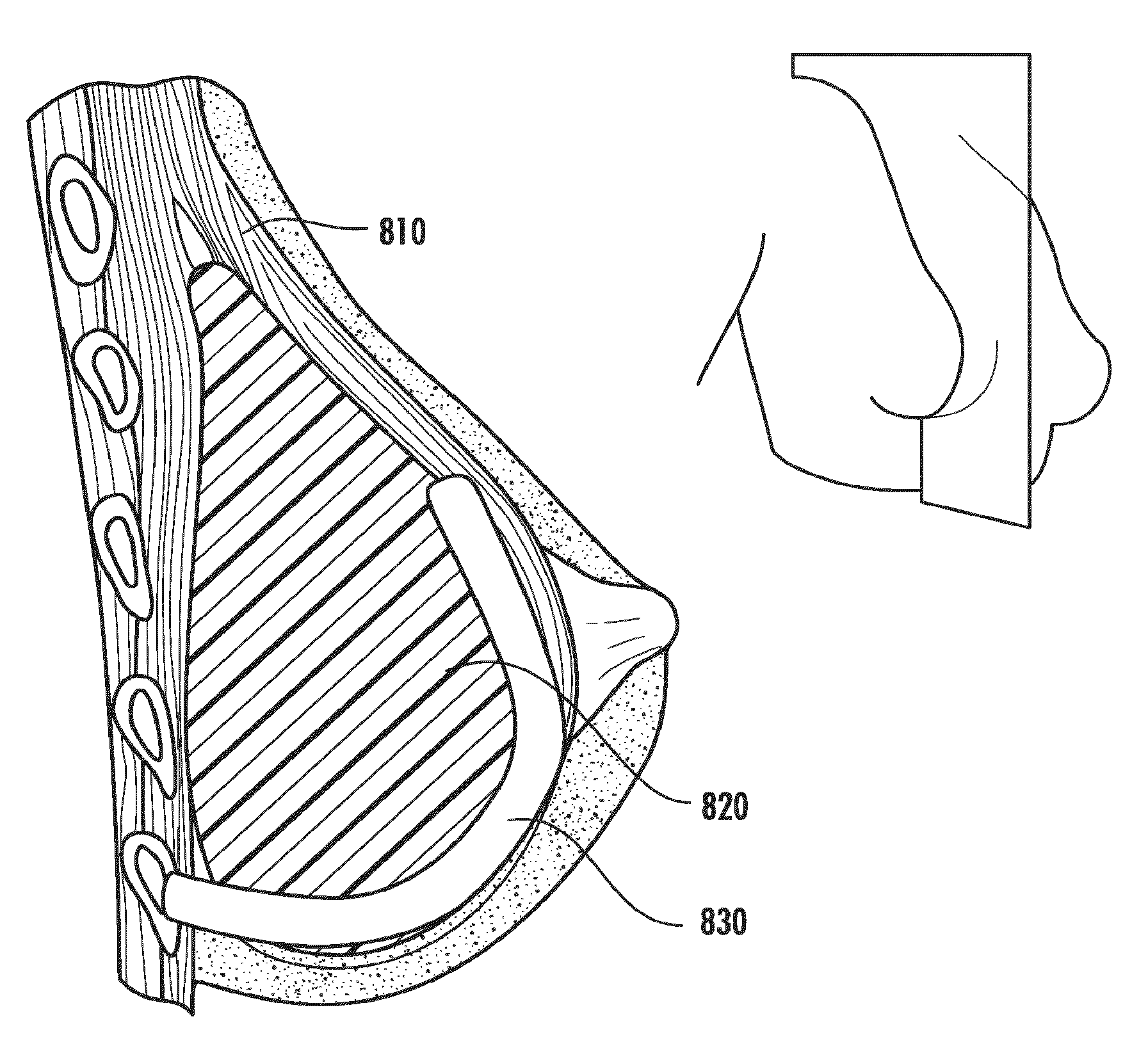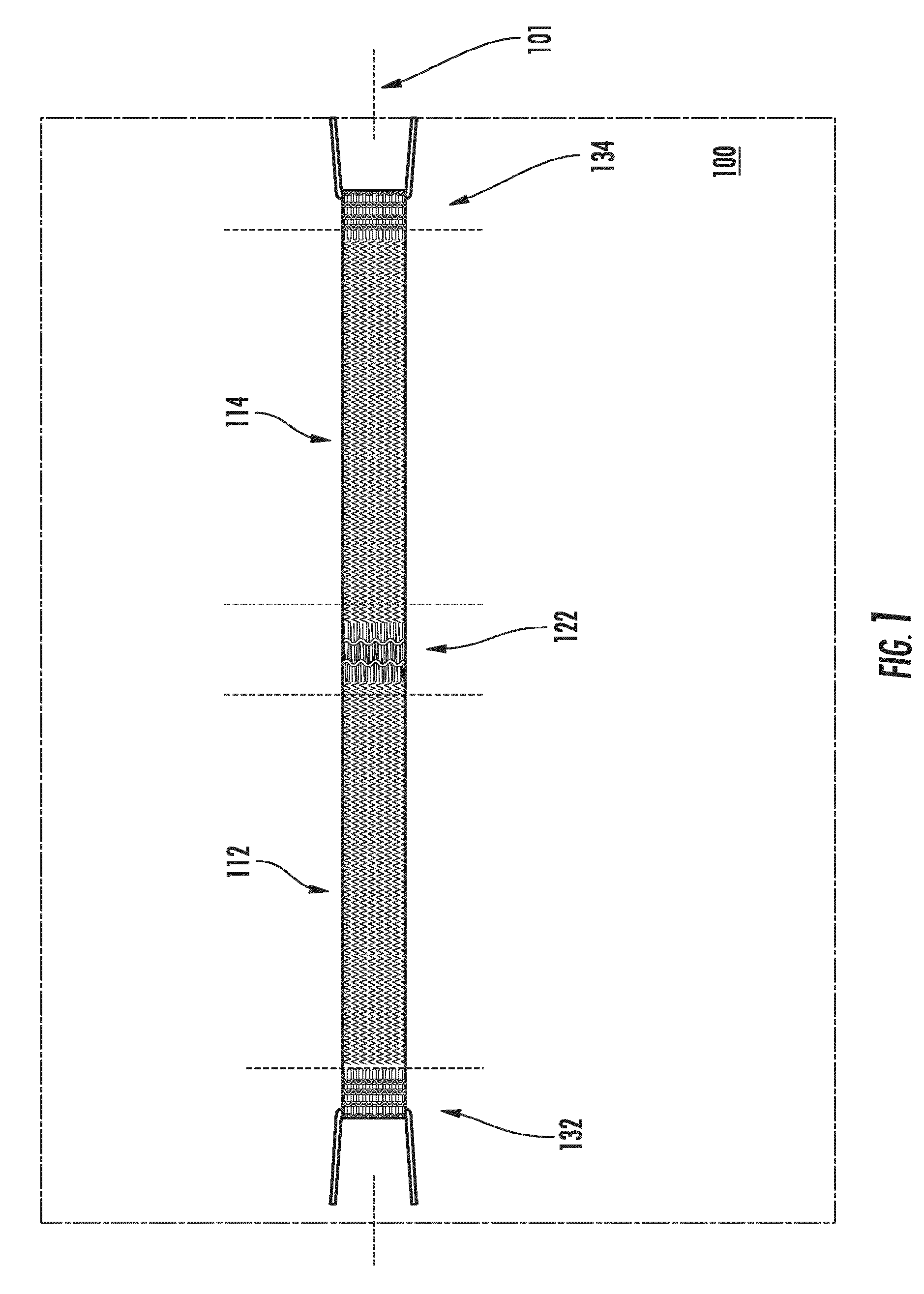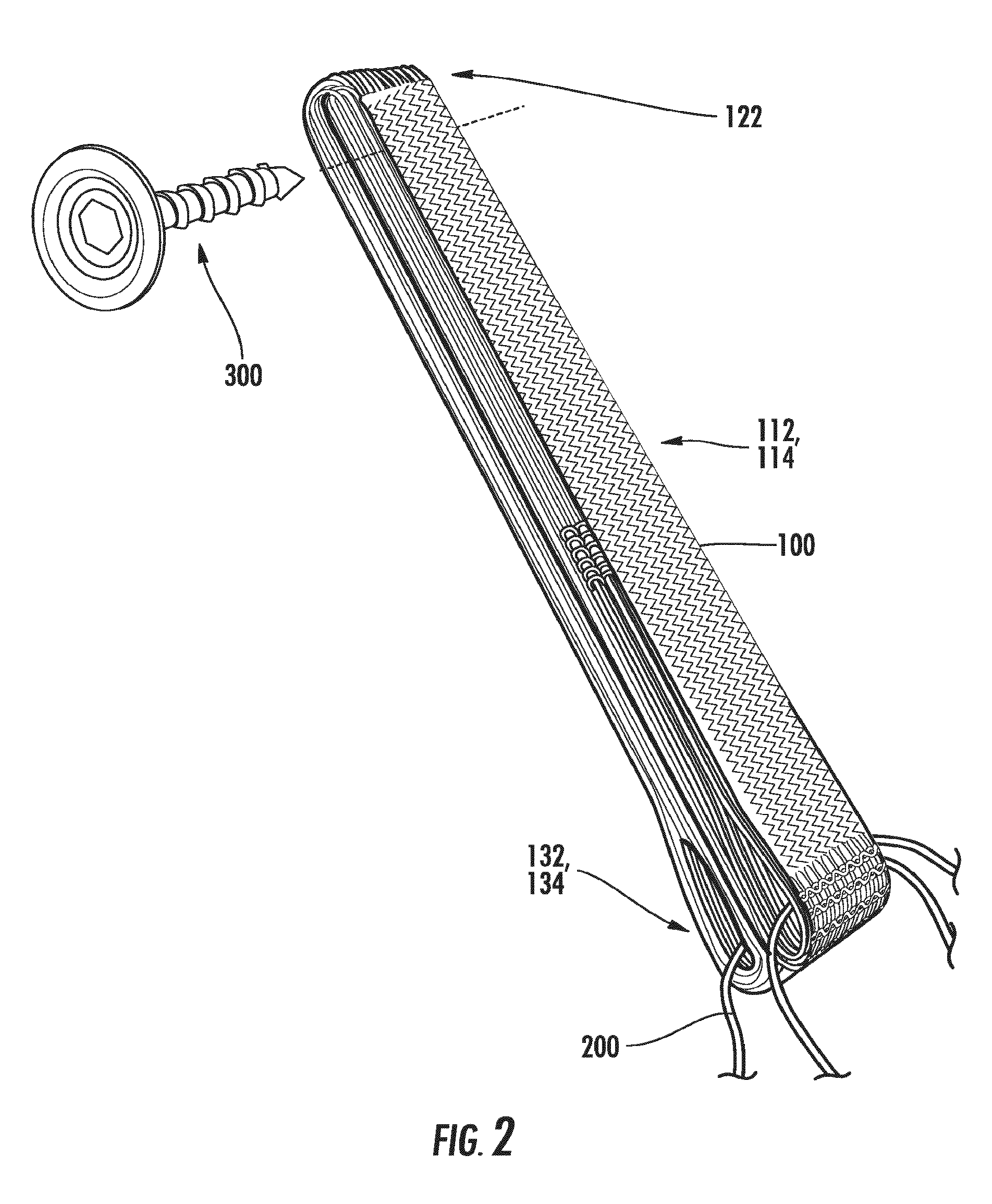Prosthetic device and method of manufacturing the same
a technology of prosthetic devices and implants, applied in the direction of knitting, ligaments, ornamental textile articles, etc., can solve the problems of severe limitations in mobility, tissue and ligament repair, and unique challenges of certain medical, cosmetic and surgical applications, and achieve the effect of sufficient flexibility
- Summary
- Abstract
- Description
- Claims
- Application Information
AI Technical Summary
Benefits of technology
Problems solved by technology
Method used
Image
Examples
Embodiment Construction
[0049]Aspects of the present invention relate to the repair of specific bodily tissues, such as hernia repair, urinary bladder tissues and slings, pelvic floor reconstruction, peritoneal wall tissues, vessels (e.g., arteries), muscle tissue (abdominal smooth muscle, cardiac), hemostats, and ligaments and tendons of the knee and / or shoulder as well as other frequently damaged structures due to trauma or chronic wear. Examples of ligaments or tendons that can be produced include anterior cruciate ligaments, posterior cruciate ligaments, rotator cuff tendons, medial collateral ligaments of the elbow and knee, flexor tendons of the hand, lateral ligaments of the ankle and tendons and ligaments of the jaw or temporomandibular joint. Other tissues that may be produced by methods of this disclosure include cartilage (both articular and meniscal), bone, skin, blood vessels, stents for vessel support and / or repair, and general soft connective tissue.
[0050]Referring to the figures, FIG. 1 ill...
PUM
| Property | Measurement | Unit |
|---|---|---|
| diameter | aaaaa | aaaaa |
| length | aaaaa | aaaaa |
| structure | aaaaa | aaaaa |
Abstract
Description
Claims
Application Information
 Login to View More
Login to View More - R&D
- Intellectual Property
- Life Sciences
- Materials
- Tech Scout
- Unparalleled Data Quality
- Higher Quality Content
- 60% Fewer Hallucinations
Browse by: Latest US Patents, China's latest patents, Technical Efficacy Thesaurus, Application Domain, Technology Topic, Popular Technical Reports.
© 2025 PatSnap. All rights reserved.Legal|Privacy policy|Modern Slavery Act Transparency Statement|Sitemap|About US| Contact US: help@patsnap.com



